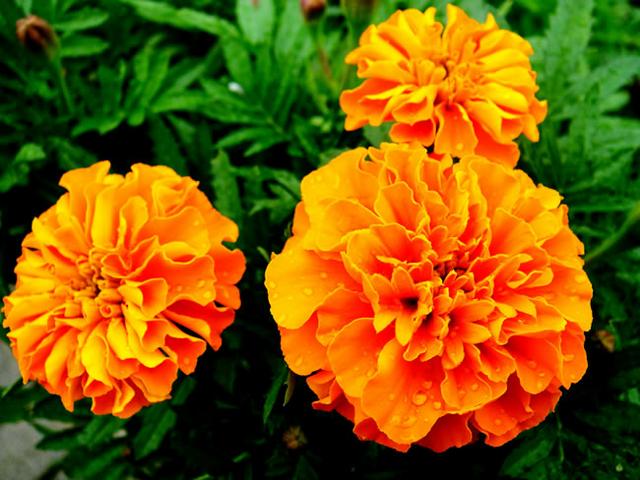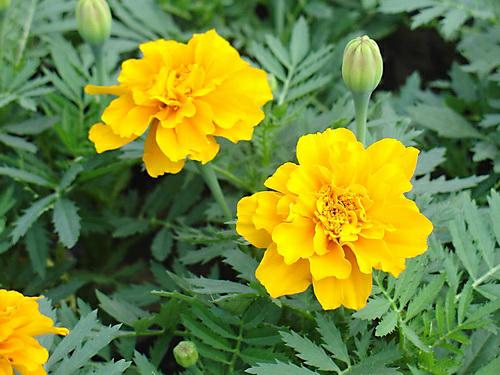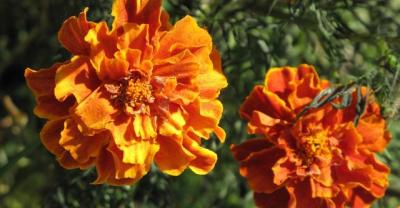Some planting techniques and methods of peacock grass
Malachite alias-small marigold, bayberry chrysanthemum, smelly chrysanthemum, red and yellow grass. Origin: originated in Mexico, Guatemala and other places. Come down and give a detailed introduction to it:

1. Soil selection: Peacock grass is resistant to drought and humidity, so the application of sandy soil with soft, breathable and good drainage performance is more conducive to its growth.
two。 Cultivation: the germination rate of ① malachite seeds is low, and the germination rate is only 10% ~ 30% by general sowing method. Therefore, it is best to use boxes to raise seedlings when cultivating malachite.
② will wet the culture soil and sow the seeds directly on the soil surface. Cover the soil with straw or newspaper to block out the light and keep the soil moist. The soil needs to be watered frequently, so the topsoil should not be dried, and the mulch can be removed after the seeds emerge. Generally speaking, the germ will appear after sowing for 2 to 5 days.
③ can be planted in a flowerpot with a diameter of 29 cm when the seedlings grow 5-6 true leaves.
3. Temperature: the optimum temperature for the growth of malachite is 15-25 ℃. The malachite grass can withstand a certain low temperature, and the environmental temperature above 5 ℃ will not be frost-damaged, but the northern winter is relatively cold, so it is best to keep it indoors with higher temperature. Malachite is afraid of high temperature, the hot summer will slow down its growth, and the number of flowers will also be reduced, so it should be properly cooled and humidified.
4. Lighting: malachite likes to shine, and it is best to put it in a place where the sun can shine directly in spring and autumn. Avoid direct sunlight in summer and shade properly around noon.
5. Pruning: ① should be pruned properly when the branches and leaves are luxuriant, otherwise it is easy to die from stuffy heat due to poor ventilation.
In the midsummer of ②, the flower quantity of malachite is relatively small, so it can be pruned comprehensively.
6. Propagation: malachite grass can be propagated by sowing, cutting and so on.
7. Fertilization: if the malachite is cultivated in ordinary soil, compound fertilizer can be mixed into the soil as fertilizer. If the malachite is cultivated with synthetic nutrient soil, it is best to apply fertilizer every 5 to 10 days during its growing period, and ammonium nitrogen fertilizer should not be used when the temperature is lower than 18 ℃.
8. Watering: ① the rapid growth period of malachite grass to prevent its humidity is too high, it is best to wait until the soil is dry before watering, but the soil should not be too dry lest the plant wither and die.
② Malachite should be placed in the open air in rainy season to avoid stagnant water in the basin.
9. Disease and insect reproduction: the pH value of ① soil will affect the health of peacock grass. When the pH value is too low, necrotic spots will appear on the leaves, which can be adjusted by adding 0.4526 kg of lime to 38 kg of water. The common diseases of peacock grass are brown spot, powdery mildew and so on. Fungicides such as watering, removing diseased leaves and timely spraying triadimefon can be effectively controlled.
② red spider is a common pest of malachite grass, which can be sprayed 600 times with 20% triclofenac EC.


- Prev

Planting pumpkins in "three" balcony gardens in rural areas
A coarse climbing plant widely cultivated for its edible fruit; pumpkin has a large round fruit with thick orange pulp and many seeds; furry.
- Next

Planting time and technical essentials of blueberry
Generally speaking, blueberries can be planted in two seasons a year, spring and autumn. It is more appropriate to plant before the temperature rises to 30 degrees in spring. The autumn temperature drops below 25 degrees below the planting ratio.
Related
- Fuxing push coffee new agricultural production and marketing class: lack of small-scale processing plants
- Jujube rice field leisure farm deep ploughing Yilan for five years to create a space for organic food and play
- Nongyu Farm-A trial of organic papaya for brave women with advanced technology
- Four points for attention in the prevention and control of diseases and insect pests of edible fungi
- How to add nutrient solution to Edible Fungi
- Is there any good way to control edible fungus mites?
- Open Inoculation Technology of Edible Fungi
- Is there any clever way to use fertilizer for edible fungus in winter?
- What agents are used to kill the pathogens of edible fungi in the mushroom shed?
- Rapid drying of Edible Fungi

